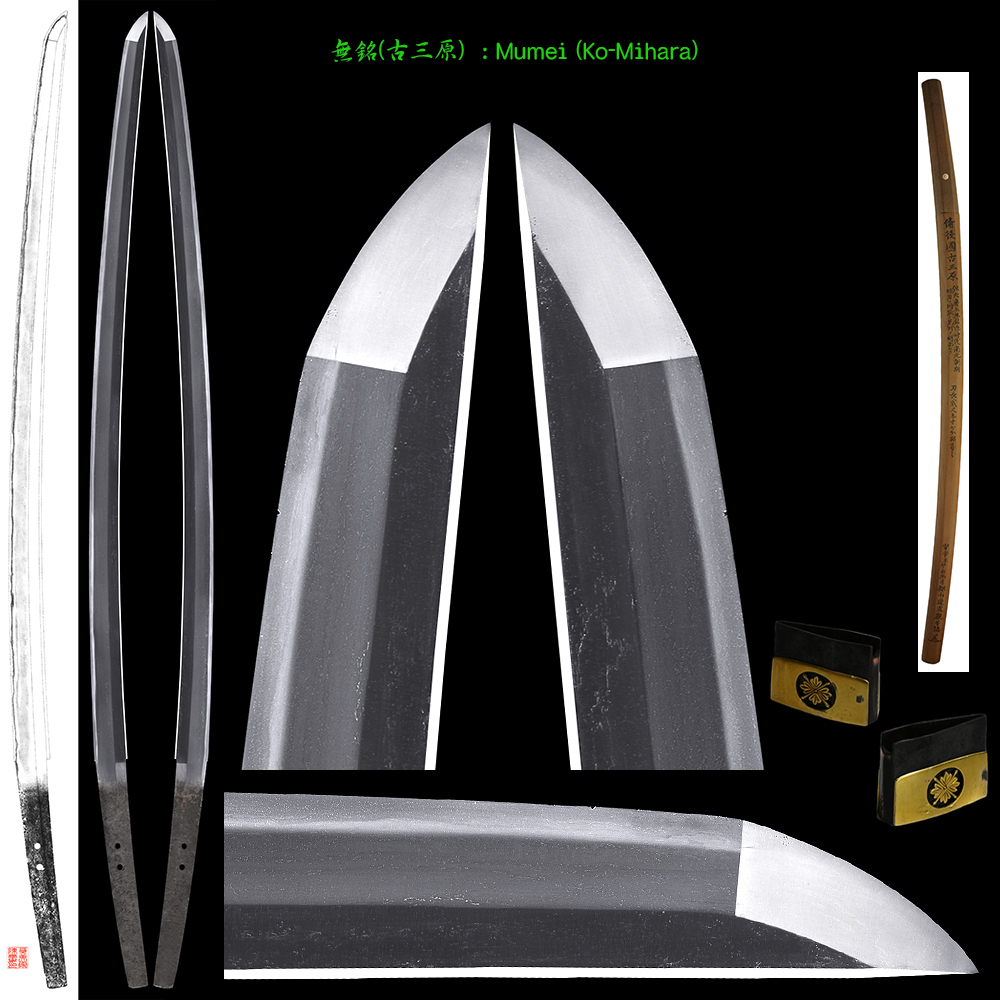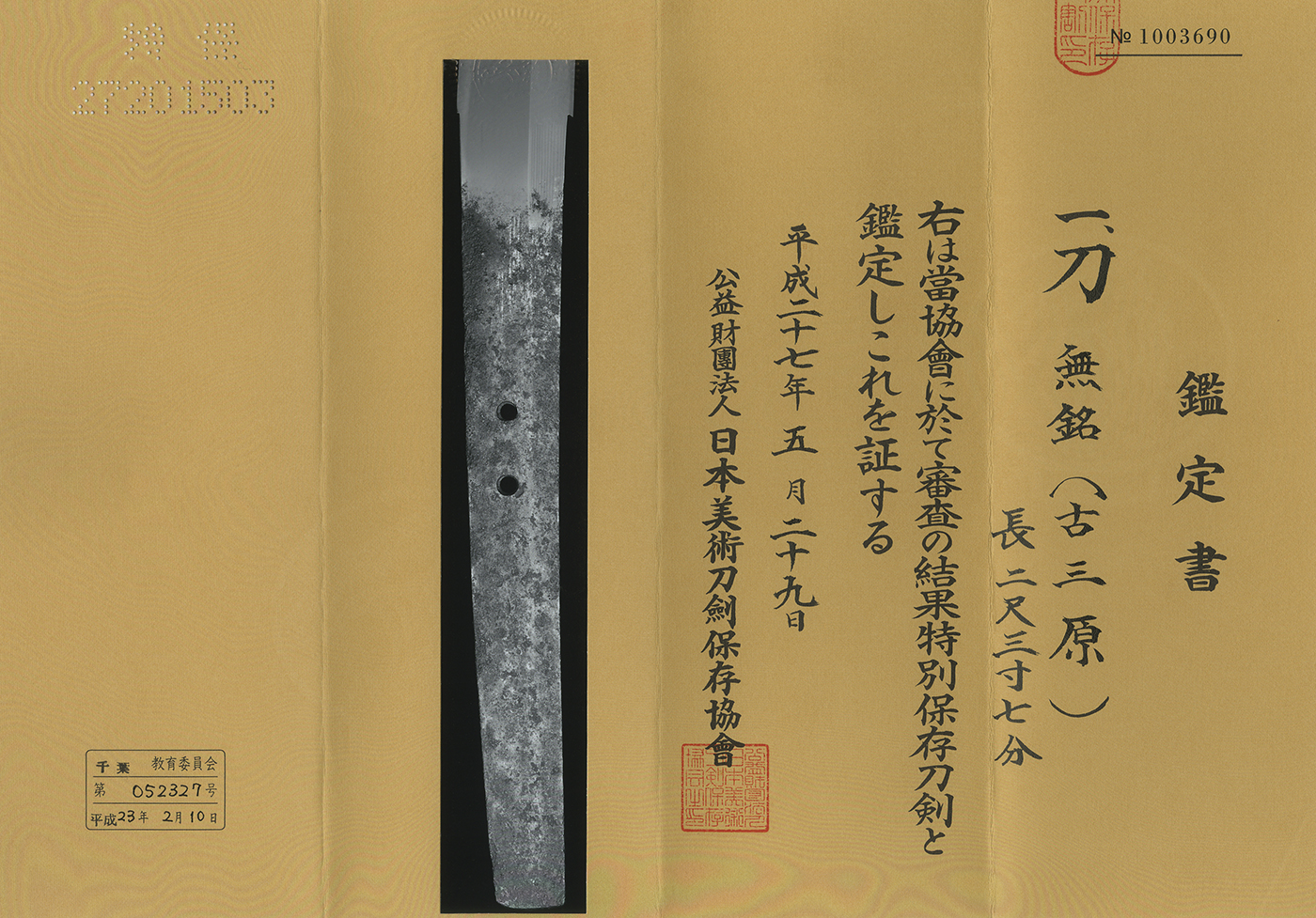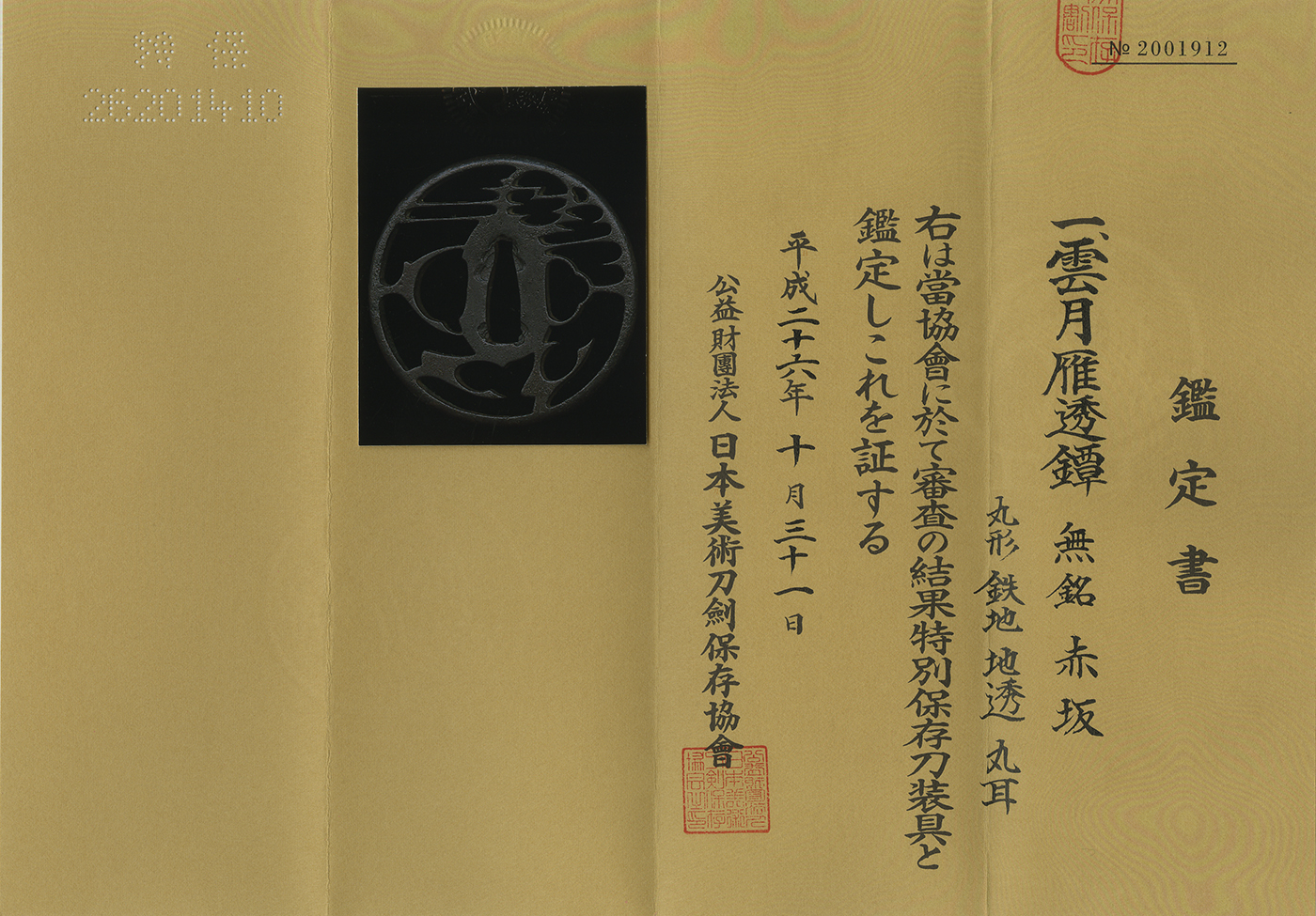Katana : Mumei (Ko-Mihara)
2017/01/04
Katana in Shirasaya with Koshriae(NBTHK Tokubetsu Hozon paper) for the blade and Tsuba
Signature : Mumei (Ko-Mihara)
Sayagaki: Mr. Tanobe
Bingo koku Ko-Mihara, O-Suriage Mumei, Nanbokucho period.
This blade is typical Ko-Mihara. Blade lenght is 71.8cm.
(We divide 4 sections for each sword as Saijyo saku, Jyojyo saku
Jyo saku and regular saki)This sword belongs to JyoJyo saku ranking.
The blade was polished.
Habaki : copper and gold foiled with family crest habaki.
Blade length : 71.8 cm or 28.26 inches.
Sori : 1.7 cm or 0.66 inches.
Mekugi : 2
Width at the hamachi : 3.18cm or 1.25 inches.
Width at the Kissaki : 2.16 cm or 0.85 inches.
Kasane : 0.64 cm or 0.25 inches.
Era : Late Kamakura period.
Shape: O-Suriage Mumei. rather wide and thick blade.
Jitetsu: Itame Hada well grained with Jinie attach. There are Shirake-Utsuri.
Hamon: Ko-Nie Deki, Suguha with soft Habuchi. There are double-Ha.
Boshi is round shape.
Special feature : Ko-mihara is the name of a swordsith group lived in Mihara of Bingo province prospered around the last Kamakura to the last Muromachi period. Masaie and Masahiro are the representative swordsmiths of this school. Distinctive points of their swords are shirake-utsuri and slight masame pattern on the jitetsu, hotsure and uchinoke on the hamon and round boshi though the comprehensive style resembles to the Yamato School's and neighboring Aoe School's. The reason why Yamato School influenced to this School is that there were many shoen; manor in medieval Japan especially owned by Buddhist temples or Shinto-shrines in Yamato province.
This blade has soft Nioikuchi and nice.
Koshirae:
Tsuba: Round shape iron Tsuba, cloud, moon and goose are engraved with open work. Mumei(Akasaka)
Fuchikashira: Shakudo with gold dots inlay.
Saya: Black color Saya, Makie box with Takamakie.
Menuki: Some design is engraved with gold color.
Katana: NBTHK Tokubetsu Hozon paper.
Tsuba: NBTHK Tokubetsu Hozon paper.
Aoi Art estimation paper : whole Oshigata.
Price : 1,500,000 JPY-






